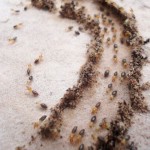Termite Pest Control & Extermination Services Utah
Legacy Pest Control in provides pest control for termites in Utah. Understanding a termite infestation is essential in order to prevent one. The two main termites to look out for are Subterranean Termites and Drywood Termites, and unless exterminated they can live up to 2 years (with the Queen potentially surviving over a decade). In order to take the proper steps to protect your home from termites, you must know the differences and behaviors of each breed. Our knowledgeable and skilled team will fix your issue by taking some effective treatments with the least amount of impact on the environment, the insecticide used for termite pest control service is safe for both kids and pets.
Termites have an important job on Earth in a forest because they turn dead wood back into soil. Unfortunately, unless you would like your building eaten to the ground, it’s best to keep your home dry and away from termites.
Drywood Termites Pest Control Utah
Drywood termites have the ability to fly up to 50 feet with a gentle wind, or 15-20 feet with no wind at all. They will typically arrive due to an infested structured nearby; whether it be a nearby tree or fence, or even your neighbors’ nearby home, unfortunately chances of them making it to your home are high. It is a good idea to get in contact with any and all of your neighbors who are within a 50-foot radius and have them get their home checked out as well.
Subterranean Termites Pest Control Utah
Subterranean termites come from the soil into your home. They can live anywhere from 5 to 10 feet down and may infest any home within a 50-foot radius. One of the most common ways these termites will make it in your home is through wood-to-ground contact, such as door frames, decks, and porch steps. They are also known to enter homes through cracks in the foundation and in brick mortar. Because these termites require soil to survive, they will build mud tubes in your home to use as a tunnel to get to the wood that is known as their food. If you have seen termites flying, mud tubes, or even think you may have a problem, even in the winter time, call Legacy Pest Control today.
Get a Quote
TERMITES
PEST CONTROL
In order to get rid of termites, knowing where to find them is crucial. Here are a few things to know about termites:
- Wet Wood: Termites have special enzymes, protozoa, and bacteria in their guts that allow them to digest Cellulose (organic fibrous material in wood and plants). Moisture is critical for their survival, so if you have plumbing problems, leaks in your roof or siding, etc it is essential to immediately address those concerns before it gets worse.
- Species: Some termite breeds even have the ability to fly, known as Swarmers. Swarms will occur when established termite colonies produce winged male and female termites in order to reproduce. After the mating flights, fertilized termites will shed their wings and go on to create new colonies.
- Colony: Termites live in a structured society ranging anywhere from a few thousand to several million depending on the species. They have a Queen who lays eggs, workers who do all of the hard labor, and immature termites with lighter duties.
Termites are dangerous insects. These termites can destroy your house foundations, furniture, shelves etc., Therefore, it is necessary to take the proper steps to protect your homes from termites and get rid of them. Our team will prevent this by taking some effective treatments with least impact on the environment.
Termite Pest Control & Extermination FAQ
In the United States, there are more than 40 species of termites, and there are over 2,000 types worldwide. All the species have a similar appearance, but with their distinguishing characteristics. Generally, termites are between 1/4 to 1/2 inch in length, and they have soft bodies and small straight antennae. The queens and kings are larger than their colony members, often more than an inch long. Termites range in color from white to various light to medium shades of brown. Swarming termites are often darker in tone, while workers are lighter. “Reproductives,” which are the flying termites, have two pairs of large wings.
Using pressure-treated wood for home construction does not necessarily protect the structure from termite damage. Even homes containing such durable woods can be susceptible to termite damage. Termites can adeptly create tunnels over treated woods to access untreated wood and other sources of cellulose. Further, termites will even eat the pressure-treated wood, if the material is aged and has lost enough of its former protective strength. Termites will begin to consume treated wood planks along an untreated edge. Damp and/or rotting wood also attracts termites.
Preventing termite infestation and damage to your home requires vigilance throughout the year. To help maintain the results from professional termite treatment your home has received. Eliminate damp conditions due to leaks or condensation at pipes or air conditioning equipment. Keep rainwater routed away from your home’s foundation. Keep gutters and downspouts free from debris, and eliminate standing water on the roof or around the base of the home. Trim plants away from your foundation, and minimize the use of wood mulch around it. Eliminate tree stumps, and remove landscape debris. Be sure that no wood parts of your home’s construction are in direct contact with the ground. Store firewood away from the house. Routinely inspect wooden porches, decks, fencing, and other areas for signs of termites. Ask your termite specialist about the best termite treatment and preventive options.
After you have discovered evidence that termites have invaded your home, it’s most reasonable to assume that they have started to work eating away at its structure. Contact your termite control service, to schedule a termite inspection. Your termite control expert will devise a customized strategy for termite eradication, based on your home’s layout and the extent of the infestation. The application of pest control materials utilized in exterminating termites can depend upon factors in the areas of usage, other circumstances in the interior and around the exterior perimeter of the home, and the particular species of termite.
No. A termite control specialist is needed, in order to conduct a thorough inspection of your home, including throughout your basement or the crawlspace under the entire square area of your home. The examination will identify areas of moisture, wood debris, and any other locations where favored termite food sources might attract an infestation. Today’s best termite control companies utilize state-of-the-art termite detection equipment, including moisture meters, IR thermometers, and sophisticated termite detection systems. Your termite control expert will provide you with recommendations as well as a thorough report detailing the problems identified and a suggested plan for ongoing home protection from termites.
Yes. Legacy is a top-quality
Utah pest control company, specializing in termite eradication and ongoing
termite pest control services that are safe for children and pets. Our long-term termite control programs emphasize ensuring that homeowners understand the need for a particular termite control system that is specific to their home. A home’s design, configuration, materials, location, climate, immediate natural and man-made surroundings, the effects of various aspects of its normal daily usage, and other factors must be included. The preventive measures suggested will help prevent re-infestation by predominant Subterranean and Drywood Termites, and other types, which can survive up to two years, and Queens, which potentially live over ten years.
The best time for termite treatment is as soon as possible after you discover indicators of infestation. These hearty pests remain active throughout the entire year, so
termite control requires vigilance year-round. The winter months are an ideal period for implementing termite bait for your home because, during this season, termites tend to be somewhat less active and easier to manage.
The extent and pace of termite damage to a home depend on a combination of factors that can indirectly or directly contribute to a thriving termite population. The richness of the environment for termites’ survival, sustained health, and reproductive robustness determines how fast the insects can overtake and destroy structural components of a home. In ideal conditions, termites can consume a 2” x 4” wood stud within around five months. In cases of termite infestation by a large colony, building damage can become apparent within just 36 months, depending upon the colony size.
Termites make their way into a home by moving their colonies from the yard to the foundation. Cracks in the footing, or wood window crevices, or gaps around utility pipes or wires at their entry points into the home provide ideal access for termites and other pests. Locations where termites enter homes also include decks and other wood structures that contact the soil, or through piles of firewood stacked on soil near a home’s foundation. They can also enter through shrubs or trees located close to the home’s exterior. Once inside the home, termites can thrive in locations well above the ground level, in areas that stay damp enough to support their needs without having to retreat to moist conditions in the soil outside.
There are several key warning signs that your home has a
termite infestation. These can include paint that has cracks or bubbles, wood that makes a hollow sound when you tap it, or mud tubes on wood beams, exterior walls, or in the crawl space under your home. Additional unmistakable evidence of termite infestation is discarded wings of swarming termites and/or termite droppings. swarming winged insects in or around your home may be termites.
30 DAY MONEY BACK GUARANTEE
We accept all credit and debit cards!
Affordable Pest Control for Termites in Ogden and Salt Lake City. Call Legacy Pest Control to Get a Free Estimate
Legacy Pest Control for Termites & Extermination Services Gallery
-
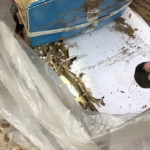
-
Termite Pest Control & Extermination Services Utah – Legacy Pest Control
-
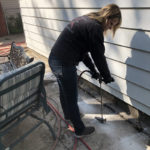
-
Termite Pest Control & Exterminator at work – Legacy Pest Control
-
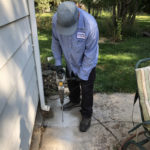
-
Legacy Pest Control Utah Termite Exterminator at work
-
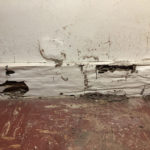
-
Termite damage – Legacy Pest Control – Termite Pest Control & Extermination Services Utah
-
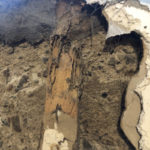
-
Termite damage 2 – Legacy Pest Control – Termite Pest Control & Extermination Services Utah
-
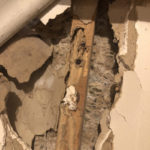
-
Termite damage 3 – Legacy Pest Control – Termite Pest Control & Extermination Services Utah
